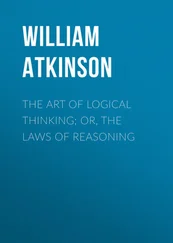“posts” etc., by which the thing to be memorized is connected with some other thing. This works for a while, and then the student finds it harder to remember the connecting links than to remember the thing itself; or he finds his attention so much taken up with the links that he forgets the original fact.
The first “artificial” system of memorizing, or mnemonics, originated with Simonides, the Grecian poet, who lived about 500 b. c. The poet was invited to a banquet at which he read a poem. Before the conclusion of the feast he was called for by a messenger, and regretfully left the hall. Scarcely had he stepped over the threshold when the roof fell in and the walls collapsed, killing the giver of the feast and all his guests. The bodies were so badly mutilated that it was utterly impossible to identify them, and the relatives and friends became most anxious about the matter, manifesting great grief. Simonides then came to the rescue, relating that he had noticed where each person had been seated, and that he distinctly remembered the same. He drew a plan of the hall, marking the position of each guest, and, as the bodies were still in the same position, they were identified by his chart. Upon this occurrence is believed to rest the responsibility for the numerous systems of memorizing generally grouped under the term “Mnemonics.”
Shortly after the above mentioned occurrence, Simonides invented a system of artificial memory, which met with very great success among the Greeks. He based his system upon the idea of the seating of the guests at the banquet. His system taught the pupil to form a mental picture of a building, divided and subdivided into apartments, corridors, antechambers, etc. These apartments, etc., were thoroughly committed to memory, and other things which the pupil desired to memorize were associated with them. Each apartment was numbered, and in it was stored the memory of some special thing, or part of a subject. Then the next room was filled, and so on. When the pupil wished to recall the objects or subjects memorized, he would go mentally from room to room, calling to mind the contents of each in turn. An enlargement of this idea, called for the building of another house, then a whole street, etc. Some modern advocates of this system bid their pupils commit to memory the location of the furniture in their parlors, and then connect with these articles the things to be memorized, passing from the table to the chair, from chair to vases, etc. Simonides’ system was afterward developed in Rome by Metrodorus, and has formed the base of innumerable systems in ancient or modern times, each promoter adding something to it, or altering it in some particular, and then announcing that he had “discovered” a new system. These “discoveries” are likely to be made for centuries to come.
Several hundred years ago Conrad Celtes promoted a system which achieved much success, and which was practically a modification of Simonides’ plan, except that letters of the alphabet were used instead of the apartments of the Greek poet’s system. Toward the end of the sixteenth century Thomas Watson, an English poet, advanced a system similar to the one above mentioned, except that he used a mental wall instead of the apartments or letters, his wall being subdivided into numerous spaces appropriately numbered. Schenkel, a German, also taught a variation of this same system, and came very near being executed as a sorcerer by reason thereof. He made a great deal of money teaching his system, until it was exposed by one of his pupils in 1619.
In 1648 Stanislus Winckelmann made a new departure in mnemonics, which has also been used as the basis of innumerable systems since that time. Although he used, in part, a modified form of Simonides’ system, he went further, and originated what is now called the “figure alphabet.” Each subsequent “discoverer” has used a different “figure alphabet,” but for the purpose the original one is here reproduced:
WINKLEMAN’S FIGURE ALPHABET.
| 1 |
2 |
3 |
4 |
5 |
6 |
7 |
8 |
9 |
0 |
| B |
C |
F |
G |
L |
M |
N |
R |
S |
T |
| P |
K |
V |
J |
|
|
|
|
Z |
D |
| W |
(Vowels, silent letters and letter “H” omitted. Two letters coming together are treated as one. Translation by sound, not by spelling.)
This table was thoroughly memorized, and words then translated into figures, or figures into letters. The letters formed from the figures are turned into words by the addition of vowels, and a word or sentence constructed having some connection (real or fancied) with the date to be memorized. Some of Winkleman’s successors have devised much better forms of “figure alphabets” but the principle is the same. The most absurd combinations are resorted to by the followers of these systems to memorize a date. A friend of the writer’s, using the above table as a guide, remembered the date of the battle of Waterloo (1815) by the words Bonaparte Licked, the first letters of the two words being B (1) and L (5) making ’15, the year of the battle. He recalled the battle of Yorktown by the words “Brave Novices Routed British,” the initials “B, N, R, B” indicating 1781. To our mind it takes a greater degree of work to memorize these associating words than to remember the date itself. Winckelmann used the words BiG RaT to denote 1480, although we would have to know the event in 1480, which was to be remembered, before we could trace the connection. Other writers have worked many ingenious combinations of this “figure alphabet” idea, but for the purposes of this work, the above examples will suffice, the whole idea being more curious than useful.
In 1840 Beniowski, a Pole, taught a system in which was first introduced the “correlative” and similar theories, which have formed an important part of many widely advertised “systems” of recent years. In 1845 Miles, an American, promoted a system of his own in which, among other plans, he used sentences containing the event to be memorized, the last word of which would contain the date, according to a “figure alphabet” system. He also taught an original plan of memorizing names of important places and events by associating them with well known objects, thus: Borodino was recalled by “Borrow a dinner;” Saskatchewan, by “Sis, catch a swan,” and so on. His most important departure, however, was his “nomenclature table” which took the place of the old “figure alphabet.” These tables were series of words, each word of which represented a number from 1 to 100. This list when committed to memory, was applied by using a word to recall its appropriate number, thus aiding in memorizing dates, etc.
In 1848, Dr. Kothe, a German, developed a system, since largely used by other teachers, the principal features of which were the connecting of words having no relation to each other, by means of intermediate or correlative words. For instance, the words “chimney” and “leaf” would be associated as follows:
“Chimney—smoke—wood—tree—Leaf.” The words “Pillow” and “Ink” would be joined in this way: “Pillow—feather— quill—pen—Ink.” This system has been incorporated into that of many teachers since that time. These systems, as a rule, are cumbersome, and usually prove more or less disappointing to the student seeking to develop his power of memory. Take, for instance, the wellknown correlation by which is taught the word Apfel , the German equivalent for Apple , which runs thus: “Apple—windfall—wind—storm—wrap well—Apfel.” It has always seemed to us that it would be much easier to impress the word Apfel on the mind in the first place, than to remember this chain of connecting words.
Читать дальше












